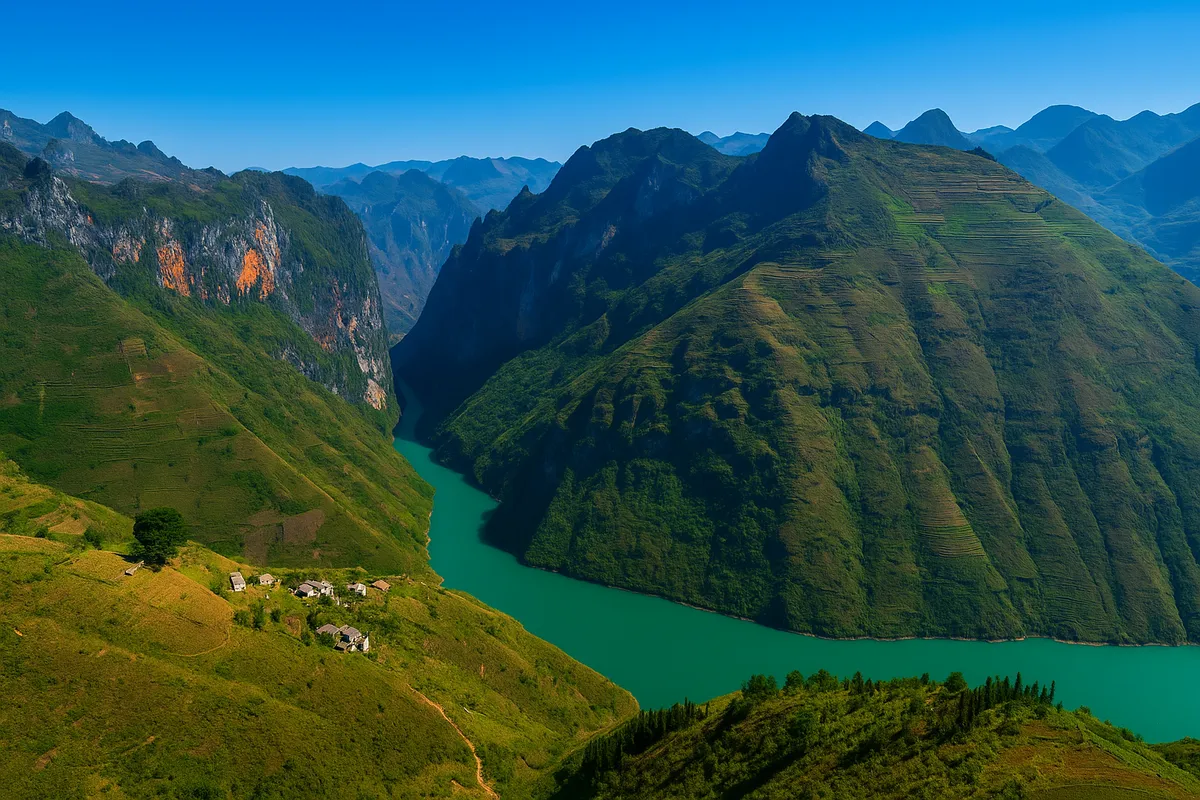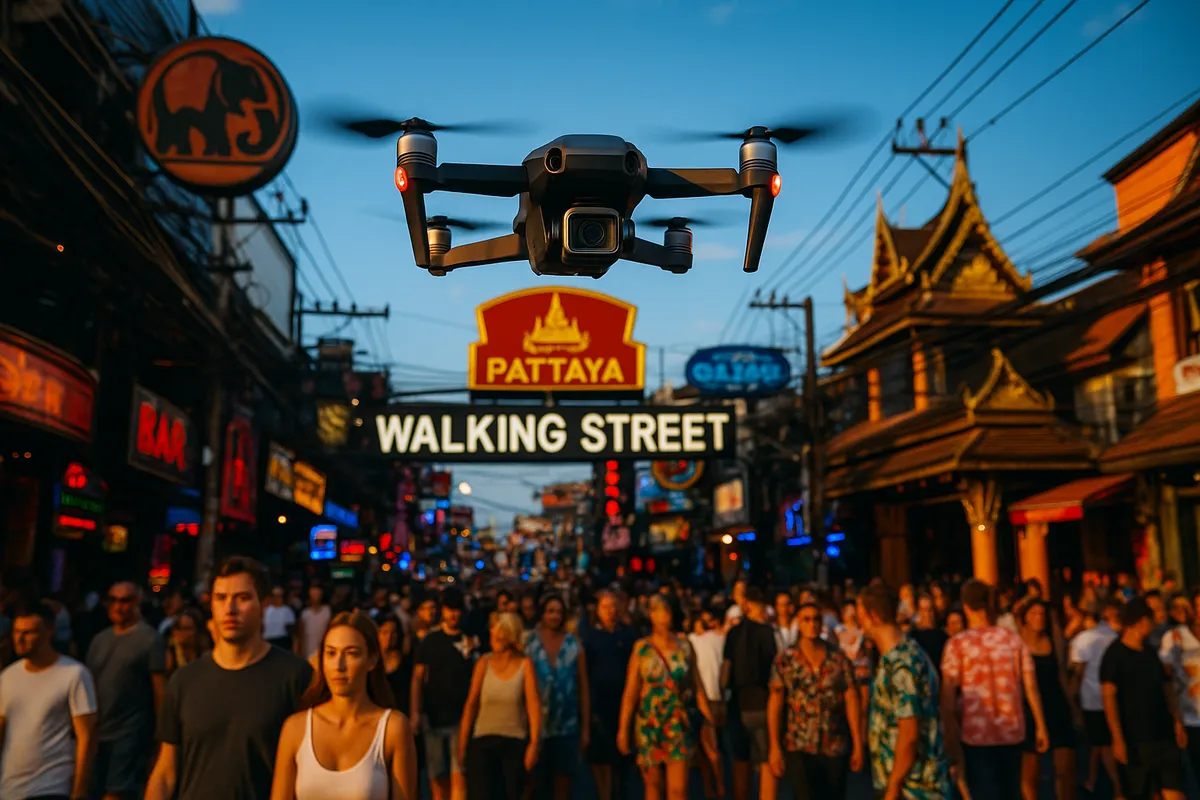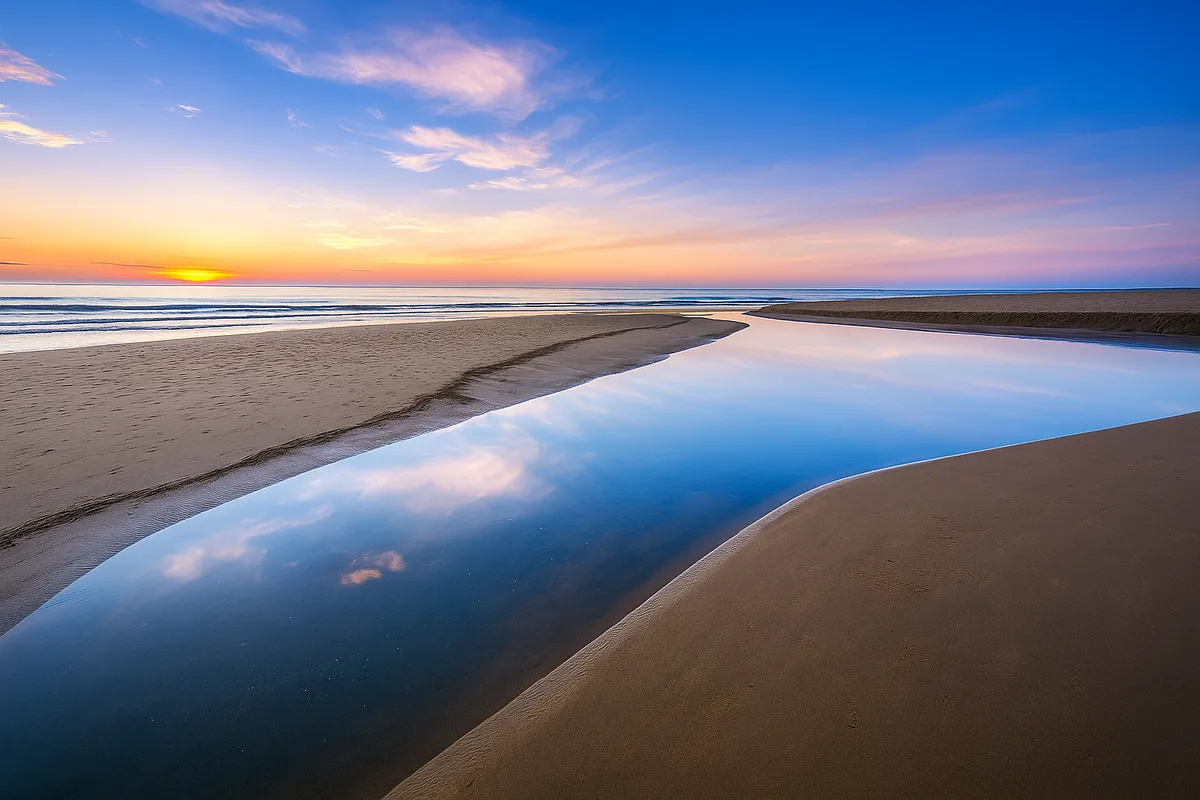Ha Giang travel experience that few people share but is valuable
- Saturday, Jun 07, 2025, 21:31 (GMT+7)
Ha Giang travel experience that few people share but is valuable
Ha Giang is not only the northernmost point on the map but also the beginning of journeys filled with discovery. It is a place where the cultural essence of Vietnam’s northern highlands converges in every mountain pass, market corner, and village home. For those who love exploring, Ha Giang is not a destination to visit just once. Each return reveals something entirely new.
The best way to reach Ha Giang depends on budget, time, and personal preferences. For travelers from Hanoi or northern provinces, sleeper buses are the most common option, with ticket prices ranging from 250,000 to 350,000 VND per trip. Reputable companies such as Quang Nghi, Bang Phan, and Hung Thanh are known for their punctuality and quality service. For those who prefer private transportation, the journey covers about 300 kilometers and takes between six to eight hours by motorbike or car. It is advisable to start early and prepare carefully with fuel, maps, sun and rain protection. Some travelers choose to take the train to Lao Cai station, then rent a motorbike to continue over the mountains. Although this adds travel time, it offers less crowded routes and untouched landscapes.
Ha Giang’s cuisine reflects the ingenuity and simplicity of the highland people. Sour pho, thang co, and au tau porridge are signature dishes. Among them, au tau porridge is both unique and beneficial for health, often served only in the evening when the air turns cold. Local eateries like Co Ba or Hai Yen near the central market gate are recommended by residents and experienced visitors. Other must-try foods include roasted buckwheat cakes, five-colored sticky rice, and smoked buffalo meat, all of which are great as gifts. To find a truly authentic meal, look for places with many local motorbikes parked outside, minimal flashy signage, and fewer tourists. These places often preserve the true highland flavors.
Accommodation in Ha Giang ranges from local homestays to secluded boutique resorts. For immersive experiences, staying in traditional tile-roofed homestays in Lo Lo Chai, Dong Van, or Meo Vac is ideal. Waking up to rooster calls and seeing clouds drifting through stone valleys brings an unmatched sense of serenity. Prices range from 150,000 to 500,000 VND per night. For those seeking more comfort, Panhou Retreat and Hoang Su Phi Lodge are excellent options that blend relaxation with cultural enrichment. Camping or glamping on top of Tham Ma Pass or at the Meo Vac stone plateau is gaining popularity, but advance booking and weather checks are essential.
Traveling to Ha Giang is not just about the journey but also about living in harmony with nature. From the majestic Ma Pi Leng Pass to the emerald green Nho Que River, from vibrant highland markets to remote villages just steps from the main road, every moment feels like stepping into a different world. Activities such as stand-up paddleboarding on the Nho Que River, photographing golden rice terraces in Hoang Su Phi, or joining the Hmong flute festival in spring are unforgettable. During buckwheat flower season between October and December, fields bloom in pink like carpets across the rocky plateau. Instead of staying at crowded sites, ask locals for quieter valleys like Sung La or Pho Cao for a more authentic experience.
Ha Giang is a haven for breathtaking photography. Sunrise at Lung Cu peak, sunset at Ma Pi Leng, or golden light slicing through cornfields in Dong Van all offer distinct beauty. For the best shots, bring a wide-angle lens and arrive at least thirty minutes before sunrise. A lesser-known tip is to reach the top of Chin Khoanh Pass before six in the morning to catch thin layers of cloud drifting through the mountains with soft golden light that adds incredible depth. Other popular check-in spots include the Hmong King’s Palace, Lung Cu Flag Tower, Tha Village, and Quan Ba Heaven Gate. However, to capture truly unique frames, seek out angles from the back or wait until the crowds thin out to embrace the tranquil spirit of the place.
There are several important notes often overlooked by first-time visitors. Weather in the mountains can vary by up to ten degrees compared to the lowlands, especially at night. Always carry a warm jacket, scarf, and raincoat. When traveling by motorbike, check brakes and fuel thoroughly, and travel in pairs if possible to assist each other in case of vehicle trouble. Avoid visiting during festival weekends without prior accommodation reservations as prices may double. In peak seasons like October to December or March to April, early booking and a detailed plan are necessary. Do not hesitate to communicate with locals. A simple greeting in Hmong or Dao language can make the trip warmer and more memorable.
Ha Giang is not just a destination but a journey that shifts one’s perception of travel. It is not merely about conquering treacherous roads or capturing perfect photos for social media. It is a chance to slow down, to feel the breath of the mountains and the sincerity of life once thought lost in urban routines. Upon returning, one does not only bring back souvenirs or beautiful photos but carries a lasting sense of emotion that is difficult to put into words.

 CHECKIN.VN
CHECKIN.VN








Share on